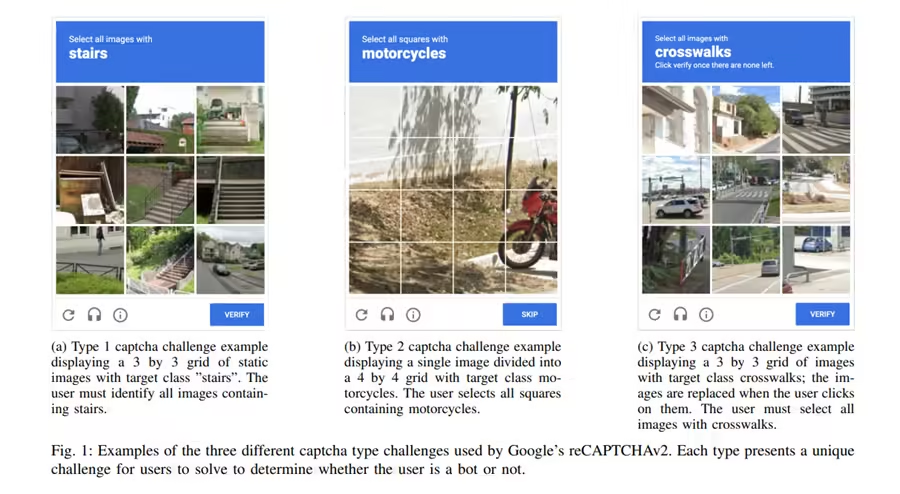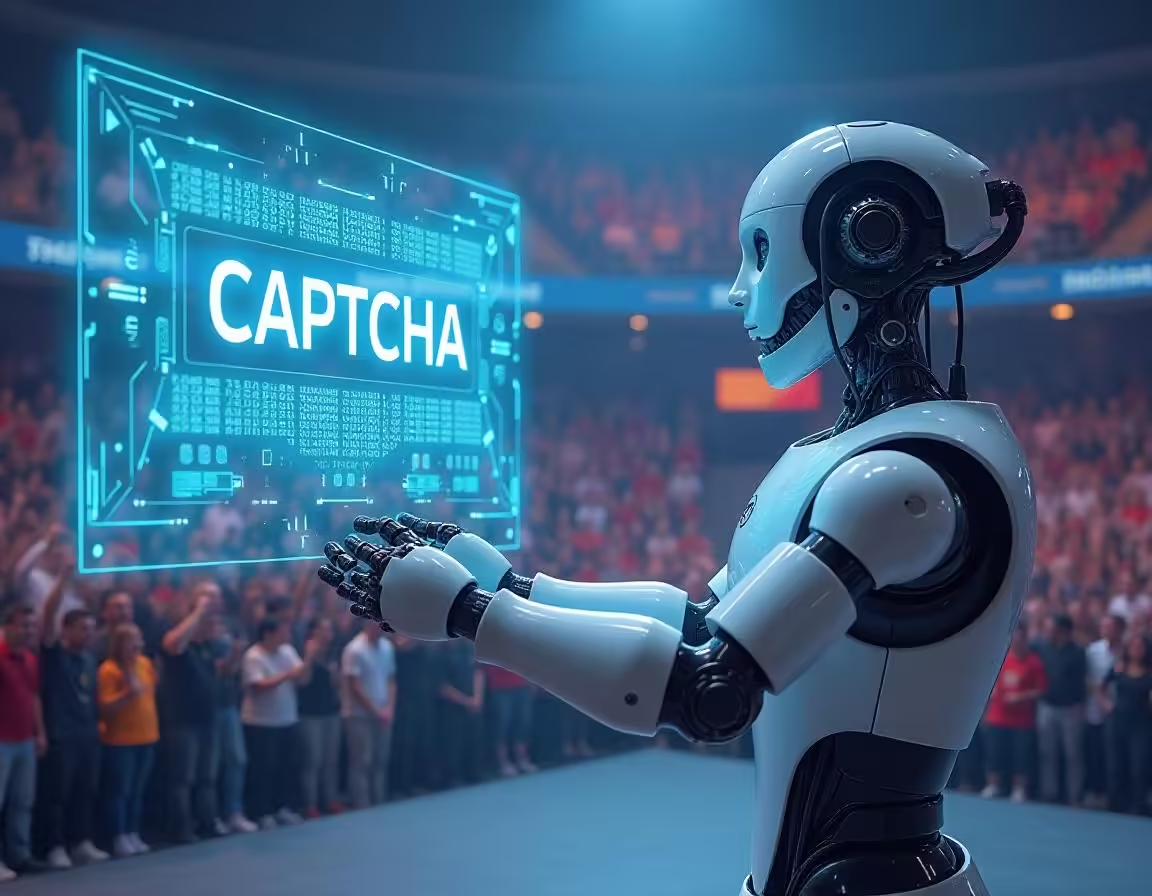Table of Contents
ToggleRecent research shows that artificial intelligence (AI) bots can now solve image-based CAPTCHAs with a perfect 100% success rate. CAPTCHAs are used on websites to help tell humans apart from automated bots. These tests usually ask users to click on images of everyday things, like bicycles, traffic lights, or crosswalks, to prove they are real people.
This study was led by Andreas Plesner, a PhD student at ETH Zurich, and his team. They focused on Google’s older CAPTCHA system called reCAPTCHA v2. This version asks users to find specific objects in a grid of images. Google has been moving away from reCAPTCHA v2, promoting its new system called “invisible” reCAPTCHA v3, which does not require users to answer questions. Instead, it analyzes how users interact with the website. However, many websites still use reCAPTCHA v2, especially if the new version is unsure if a user is human.
How the AI Bots Work?
To create a bot that could easily break through reCAPTCHA v2, the researchers used a special version of the YOLO (“You Only Look Once”) object-recognition model. This model is famous for quickly and accurately identifying objects. It has even been used in video games to help players cheat by spotting their opponents.
The researchers trained their YOLO model on a large set of 14,000 traffic images. This training helped the bot recognize which images in a CAPTCHA grid contained specific objects, such as cars, bicycles, and street signs. They also used a different YOLO model for more complex challenges, where users had to identify parts of a single image that contained certain objects.

The accuracy of the YOLO model varied based on the type of object it was trying to recognize. For example, it could correctly identify fire hydrants 100% of the time, while it only managed to identify motorcycles 69% of the time. These impressive results, along with clever techniques to hide the bot’s true identity—such as using a VPN to avoid being detected and mimicking human mouse movements—allowed the AI to consistently solve CAPTCHA challenges.
Why This Matters?
For many years, researchers have tried to create bots that can solve CAPTCHAs, but previous attempts had success rates between 68% and 71%. This new study shows a major leap forward, marking a shift in how we think about CAPTCHAs. The authors of the paper stated, “We are now officially in the age beyond CAPTCHAs,” indicating that these security measures may no longer work effectively.
This isn’t the first time AI has managed to bypass CAPTCHA systems. Researchers have found ways to crack audio CAPTCHAs, which were designed for users with visual impairments, since as far back as 2008. By 2017, AI models were successfully defeating text-based CAPTCHAs that asked users to type in distorted letters. As technology improves, it becomes more complicated to tell the difference between humans and machines.
In response to these challenges, companies like Google are focusing on improving their CAPTCHA systems. They are looking for more advanced ways to verify users without relying on visual tests. A spokesperson from Google Cloud said they are committed to enhancing security while using “invisible” methods to ensure users are real.
As AI continues to improve, finding effective CAPTCHAs becomes harder. The authors of the study put it simply: “A good CAPTCHA marks the exact boundary between the smartest machine and the least smart human.” As AI gets better, it will be increasingly difficult to create challenges that can reliably identify real users.
Looking Ahead
The results of this research go beyond just web security. They may lead to a future where online interactions are verified in new and creative ways. As more people and businesses do their work online, the need for strong security becomes even more important. The rise of AI that can outsmart traditional security measures raises serious questions about our online safety.
In a world where AI can easily mimic human actions, companies must find new ways to protect their users. The struggle to keep bots out of online spaces is not over. As technology continues to advance, both AI and security measures will need to adapt.
The emergence of bots that can solve image-based CAPTCHAs serves as a reminder of how fast technology is changing. It highlights the need for continuous improvement in security methods to ensure safe and trustworthy online experiences. As we move forward, it will be interesting to see what new solutions come up to address these challenges and how they will shape the future of online security.
